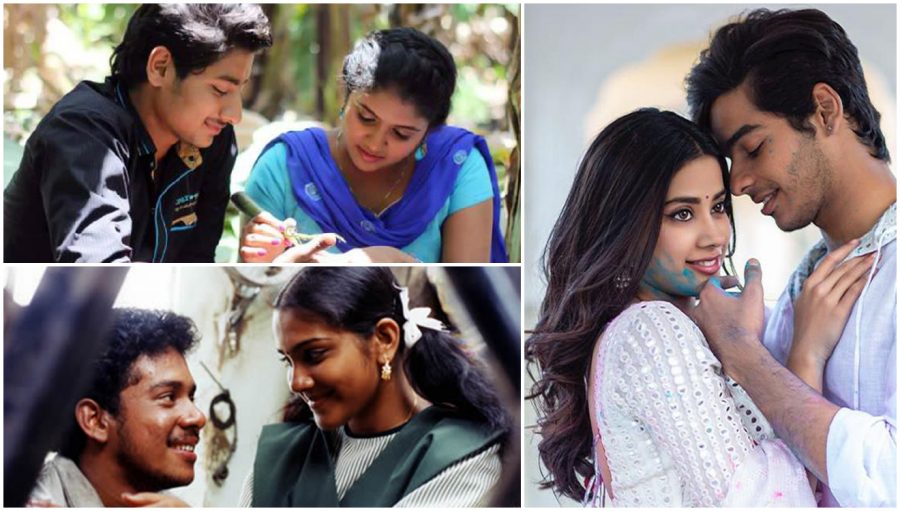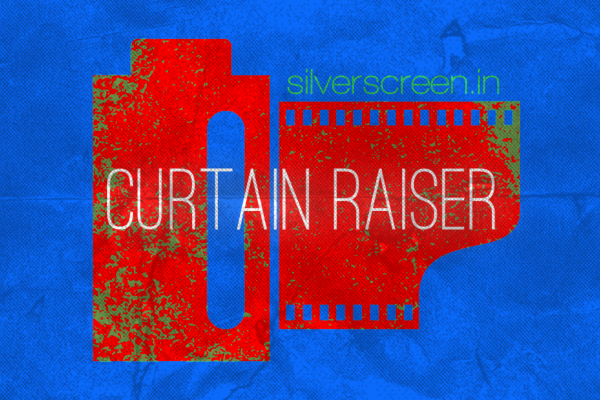When the trailer of Dhadak was released last week, the reactions were varied. While some fulsomely praised the Karan Johar production (a remake of the Marathi blockbuster Sairat) that stars Ishaan Khatter and Janhvi Kapoor, most could not but gulp in disbelief at the flippancy of it all.
For one, Sairat was all about keeping things real. It was a sweeping love story on the surface, but the undercurrent of caste was a constant. The utter realism the immensely talented Rinku Rajguru brought to the character of Archi, and the shy smiles of Parshya, who derives strength from Archi and later becomes her anchor were huge pluses. You invested in them, and were worried sick if they would make it at all.
Agreed Dhadak comes riding a wave of expectation, but the manicured lawns, Ishaan’s cutesy earnestness, Janhvi’s hair curled just so, and the “Pappi? Matlab kutte ka chhota bachcha” dialogue don’t exactly help the cause. The shock factor in Sairat was because we’d bought the idea that love could bloom despite the differing backgrounds. And the leads convinced you they were real teens out there, in the first flush of love. Parshya smarts when slapped but stays silent; he knows where he comes from and how much he is allowed to raise his head, or not.
Years before all this, there was the 2004 Tamil film Kadhal, directed by Balaji Sakthivel, which traces the life of two teenagers from different castes — one a student (Sandhya) and the other a mechanic (Bharath) — who elope. It matters to her well-to-do upper caste family that he dared touch their girl. As you watched the film, you waited in dread for something to break the furtive love of the teenagers. The searing climax drove home the point of what the privilege that caste lends could really do.
Growing up, I watched films where caste and religion were couched beneath layers of symbolism — an unspoken word, a gesture, a rushed reference to something… Years later, as their confidence grew, filmmakers came up with creations that celebrated the background they were set in and showcased it on the big screen too — be it the books read, the food eaten, the water drunk, the confidence displayed, the words spoken or left unsaid and the games played. These films are deeply reflective of the milieu the characters come from.
Filmmakers are growing a distinctive voice. No more generic backgrounds or reducing the struggle to merely one of economic disparity. Nagraj Manjule’s National Award-winning Sairat, which felt loosely inspired by Kadhal, celebrated the first flush of love, gave you hope, scared you a bit and renewed hope before socking you in the gut. It said that you could run miles from home and begin a new life, but the long arm of caste catches up anyway.
Neeraj Ghaywan’s Masaan, which did the rounds of many a film fest and won two awards at Cannes, slipped in caste in such a matter-of-fact tone that you cringed. “Ladki upper caste hai, zyaada senti mat hona,” (The girl is from an upper caste; don’t get too involved with her) Deepak’s (Vicky Kaushal) friends tell him. In turn, he tells the luminous Shaalu (Shweta Tripathi) that he’s from Harischandra Ghat, carries wood to the pyre and burns corpses for a living.
Such a scene would have been unthinkable some years ago, because creators have traditionally shied away from naming the elephant in the room. Metaphors were used as crutches and the story ambled along. Another important factor is that rarely were there filmmakers from oppressed communities who could give voice to their lived experiences. If Pa Ranjith is doing that in Tamil, not just directing but also producing rooted cinema, Manjule has been doing so in Marathi with Fandry, Sairat and more. These filmmakers are recreating their lives on screen, layering it with nuances so that the meaning is clear to the discerning viewer.
Filmmakers make their film choices based on their lived experiences too. Discussing caste and identity politics in cinema at the recently organised Nitte International Film Festival in Mangaluru, three filmmakers, two of whom have borne the trauma of having their films pulled out of the schedule of the Indian Panorama at the International Film Festival of India in Goa last year, spoke about what dictates their film choices. Sachin Kundalkar (Nirop, Gandha, Aiyaa and Gulabjaam) said that some filmmakers, including himself, were making very personal films, setting them in a milieu they are familiar with. “I happen to belong to a generation that stopped identifying people by their surnames. I grew up in a city where surnames were forgotten. I also happen to make urban films, but do not get restricted while writing a character,” he said. And that is why, though Manjule and he are good friends, Kundalkar is honest enough to admit that “Our childhoods were different. I cannot tell his stories, and he cannot tell mine. We cannot pretend to know every perspective. We work on our limited set of experiences.”
Recommended
Sanal Kumar Sasidharan (S Durga and Ozhivudivasathe Kali) concedes caste is a major issue in cinema. “It precipitates. It is not as if you are consciously talking about something to give it visibility. It is organic. During the process of filmmaking, you become an observer and caste is something you observe too.”
Getting the viewer to not just observe the privilege of caste but its helplessness too is part of the filmmaker’s ultimate objective. Will Dhadak, which is set in Rajasthan, no stranger to honour killings and caste struggles, go beyond manicured nails, coiffed hair, and the carefully-inserted regional slang to get to the heart of Sairat? That love can surmount geography, but rarely can it rise above the narrow divisions of caste.



